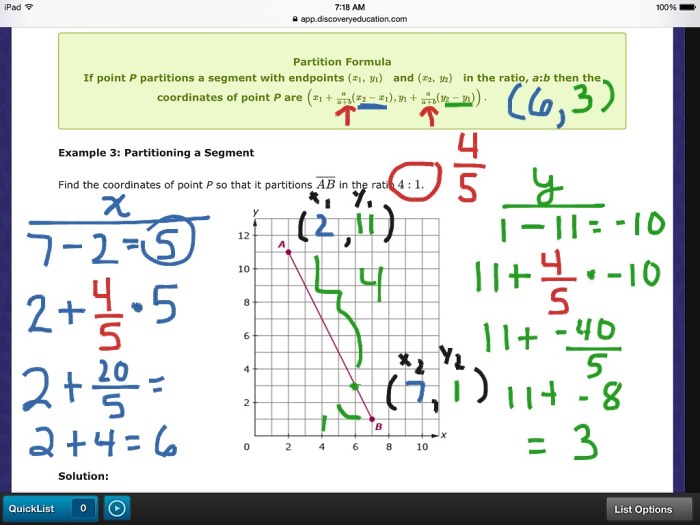Delving into the realm of partitioning a segment worksheet answers, this comprehensive guide provides a captivating exploration of the techniques, applications, and benefits associated with this invaluable data organization strategy. From understanding the fundamental concepts of segment partitioning to mastering the practical steps involved, this guide empowers readers to harness the full potential of partitioned worksheets for enhanced data analysis and decision-making.
Partitioning a segment worksheet involves dividing a large dataset into smaller, more manageable segments, enabling efficient data organization, analysis, and visualization. This approach offers a structured framework for organizing complex data, facilitating deeper insights and informed decision-making.
1. Segment Partitioning Concepts
Segment partitioning is a technique used to divide a large worksheet into smaller, more manageable sections. This can improve data organization and analysis by making it easier to find and work with specific data.
There are several different types of partitioning methods available, including:
- Horizontal partitioning: Divides the data into rows.
- Vertical partitioning: Divides the data into columns.
- Mixed partitioning: A combination of horizontal and vertical partitioning.
2. Worksheet Design for Partitioning
When designing a worksheet for partitioning, it is important to consider the following factors:
- The number of partitions needed.
- The size of each partition.
- The type of data in each partition.
Once these factors have been considered, you can use formulas and functions to facilitate partitioning.
3. Partitioning Techniques

To partition a segment in a worksheet, follow these steps:
- Select the data you want to partition.
- Click the “Data” tab.
- Click the “Sort & Filter” button.
- Click the “Filter” button.
- Select the column you want to partition by.
- Click the “OK” button.
You can also use conditional formatting to visually distinguish partitions.
4. Applications of Partitioned Worksheets: Partitioning A Segment Worksheet Answers

Partitioned worksheets can be used in a variety of business scenarios, including:
- Data analysis
- Data visualization
- Decision-making
By partitioning your worksheets, you can improve data organization and analysis, and make better decisions.
5. Examples and Case Studies

Here are some examples of partitioned worksheets:
- A worksheet that is partitioned by product category.
- A worksheet that is partitioned by customer type.
- A worksheet that is partitioned by sales region.
These are just a few examples of how partitioned worksheets can be used to improve data organization and analysis.
FAQ Compilation
What are the benefits of partitioning a segment worksheet?
Partitioning a segment worksheet offers numerous benefits, including improved data organization, enhanced data analysis capabilities, and simplified data visualization.
How do I determine the appropriate number and size of partitions?
The optimal number and size of partitions depend on the specific dataset and analysis requirements. Consider factors such as data volume, data distribution, and the desired level of granularity.
What techniques can I use to partition a segment in a worksheet?
Various techniques can be employed to partition a segment in a worksheet, including conditional formatting, formulas, and functions. Each technique offers unique advantages depending on the specific data and partitioning requirements.